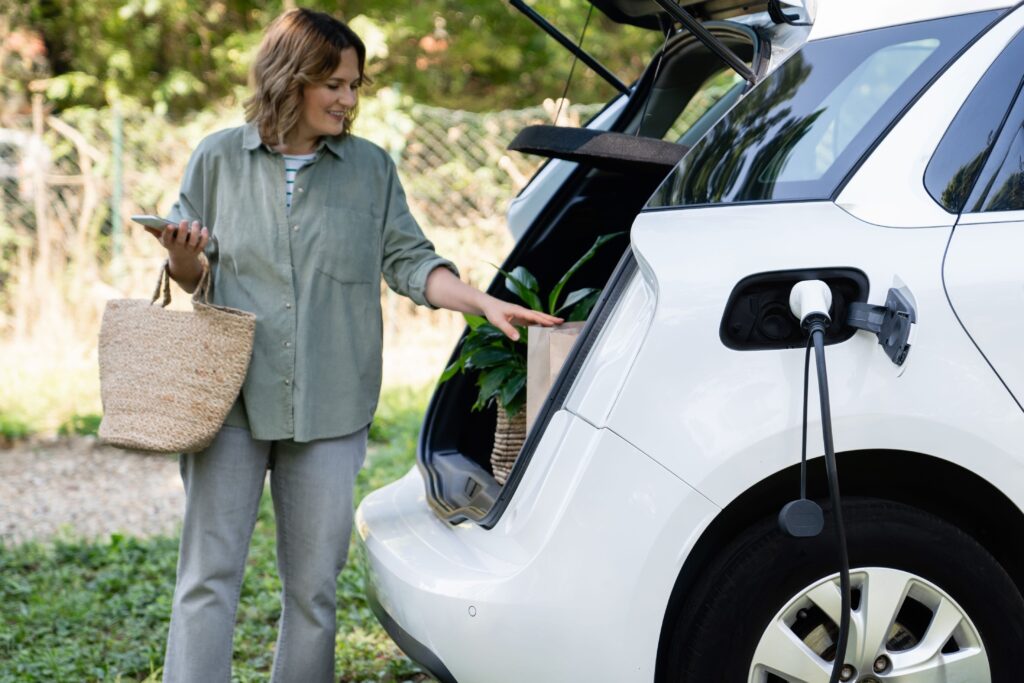What are Greenhouse Gases?

Greenhouse gases (GHGs) are gases in the earth’s atmosphere that trap heat. These gases act like the glass walls of a greenhouse, heating the planet. Without this greenhouse effect, temperatures would drop too low to support life. However, human activities are changing Earth’s natural greenhouse effect; Scientists agree that GHGs are the cause of global warming and climate change.
Many of our daily activities generate GHG emissions, such as driving a car, disposing of waste, mowing the lawn, and heating a home. Reducing your GHG emissions is a great way to reduce your impact on the environment.
Measuring Your GHG Emissions
It can be difficult to understand and measure how daily activities result in GHG emissions. With this in mind, RCEA developed a user-friendly GHG calculator to help our customers measure and better understand the GHG emissions that result from the electricity consumed to power their homes and businesses.
The GHG calculator provides the average annual GHG emissions from consumed electricity generated by RCEA according to RCEA’s power mix, or the mixture of electricity sources used, for that year. For more information on RCEA’s power mix, visit our Energy Sources page.
Please note that this calculator:
- Does not include GHG emissions from PG&E’s electricity delivery service.
- Does not take into consideration hourly and/or daily changes to electricity consumption and generation.
How To Use the Greenhouse Gas Emissions Calculator
Step One: Select the RCEA electricity service option that you receive.
Your electricity service plan is listed on your PG&E bill. For a breakdown of how to read your bill, visit Understanding Your PG&E Bill or contact us.
Step Two: Select the year that the electricity was used.
Please note that RCEA publishes its GHG emissions from the previous year during Summer. For example, by the end of Summer 2024, RCEA will have published its 2023 GHG emissions, allowing our customers to calculate their GHG emissions for 2023.
Step Three: Enter your electricity usage, measured in kilowatt-hours (kWh). Results will be displayed automatically.
Use one of the following methods to find your electricity usage:
- Check your PG&E bill.
- Download your electricity usage by logging into your PG&E account.
- Give our staff a call at (707) 269-1700.
Average Greenhouse Gas Emissions
How do your GHG emissions compare to the average? Use the table below to compare your GHG emissions with the average for different customer classes.
| Customer Class | Average Usage per Customer (kWh) | Average Emissions per Customer (lbs CO2e) | Average Emissions per Customer (MT CO2e) |
|---|---|---|---|
| Residential | 4,284 | 1,731.19 | 0.79 |
| Small Commercial | 10,116 | 4,087.94 | 1.85 |
| Large Commercial | 116,340 | 47,013.79 | 21.33 |
| Industrial | 185,496 | 74,960.20 | 34.00 |
Reducing Your Greenhouse Gas Emissions
Although most GHG emissions come from large industry, many people reducing their emissions on an individual scale adds up to great change! Below are some tips for reducing the GHG emissions from electricity:

Switch to Renewable Electricity
Switching to REpower+ is a great way to offset GHG emissions! REpower+ is RCEA’s 100% renewable and carbon-free electricity service. For only about $5 more per month for the average residence and $9 more per month for the average business, you can reduce the GHG emissions from your electricity generation to near zero.

Reduce Your Electricity Use
Reducing your electricity use is a great way to decrease GHG emissions and reduce your bill! Visit our Energy Tips page for tips on reducing your electricity usage.
For customized help reducing energy usage, sign up for a No-Cost Energy Assessment of your home or business! Check out our Programs & Rebates page for more information.

Drive Electric
Reducing your use of gas-powered vehicles is one of the best ways an individual or small business can reduce their GHG emissions. Drive clean and avoid gas prices by upgrading to an electric vehicle (EV)! Learn more about driving electric in Learn & Connect and explore our residential and commercial EV and EV charging incentives to save on an EV today.

Use Alternative Transportation
If an electric vehicle is not an option for you, try taking the bus, walking, or riding a bike! Electric bicycles or e-bikes are a great way to get around with less effort. Check out our e-bikes page to learn about the benefits of riding an e-bike and get help choosing the right one for you!